Artnet News Pro
Georges Mathieu Was a Star of Postwar Art—and Then Disappeared. Here’s Why Top Galleries Are Investing Big to Revive His Market
The French painter is now the subject of shows at Perrotin and Nahmad Contemporary in New York.
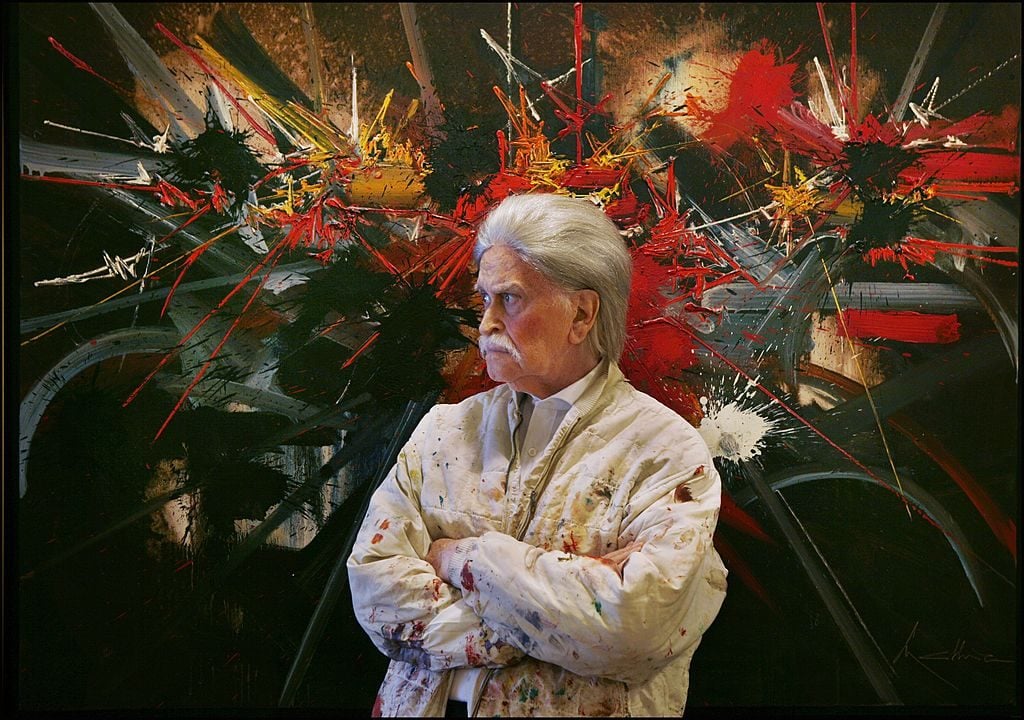
The French painter is now the subject of shows at Perrotin and Nahmad Contemporary in New York.

The market for work by the late abstract painter Georges Mathieu has been on a remarkable rise and fall and rise again since he first emerged in France in the postwar years, a period in which he has been alternately celebrated and sidelined.
In the beginning, his flair for showmanship, forays into commercial art, and celebration by powerful French figures all helped catapult Mathieu to fame in the 1950s and ’60s. Then, those same factors contributed to his backslide, particularly in the U.S., where critical disdain pushed him into relative obscurity in the ensuing decades.
Now, the two galleries that work with the artist’s estate—Perrotin and Nahmad Contemporary—have opened a two-venue retrospective in New York that will showcase roughly 50 works by the artist, including several on loan from museums.

Georges Mathieu.
Mathieu was “undoubtedly a polarizing figure. Flamboyant, royalist, and reactionary, his showmanship was an anathema to many American artists at the time,” said former Guggenheim curator Nancy Spector in a video interview released in connection with the Perrotin and Nahmad shows. The centenary of Mathieu’s birth “offers an ideal occasion to look back at the career of an artist and theorist who dedicated his life to an emotive, gestural, and highly nonrepresentational form of abstraction that had no correlative in the empirical world,” Spector said.
Overall, Mathieu’s work was well received from the time he began painting, around 1944. His fluency in English won him a public-relations job at the shipping company United States Lines in 1947, a role that required frequent travel to New York, where he stayed on top of up-and-coming contemporary art, including the work of Jackson Pollock and Willem de Kooning.
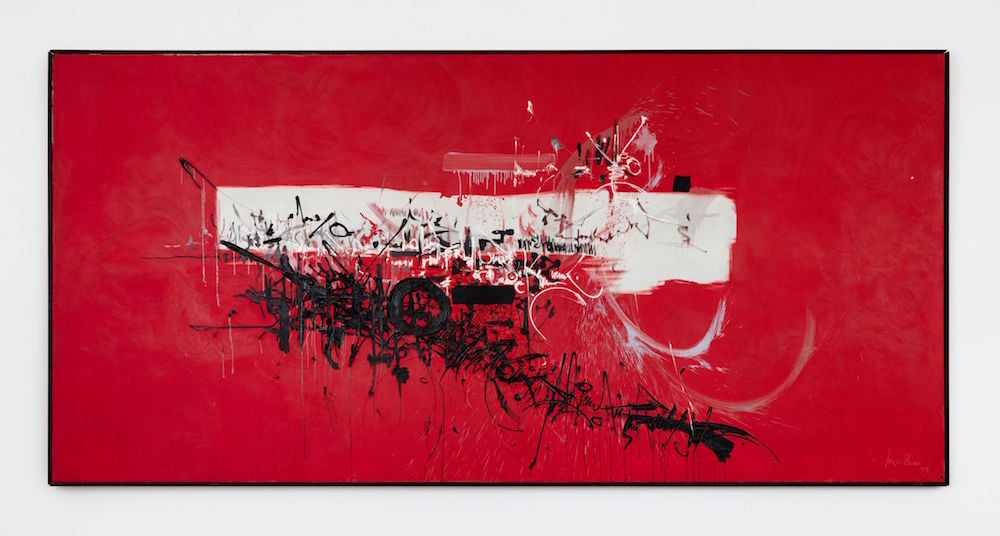
Georges Mathieu, Hugues de Payens fonde l’ordre du Temple (1958). Photo: Tanguy Beurdeley. © Georges Mathieu / ADAGP, Paris & ARS, New York, 2021. Courtesy of the artist and Perrotin.
In the 1960s, Mathieu’s high-profile commissions included a tapestry that was shown at the French pavilion at Expo 67 in Montreal, a set of dinnerware for Sévres, a design for the 10-franc coin, a stamp commemorating Charles de Gaulle, and abstract designs for Air France advertising posters.
“So everybody in France used to have a work by Georges Mathieu in his pocket,” said Olivier Fau, Sotheby’s head of private sales for France and Europe. “He was very fashionable at the time and was in collections worldwide.”
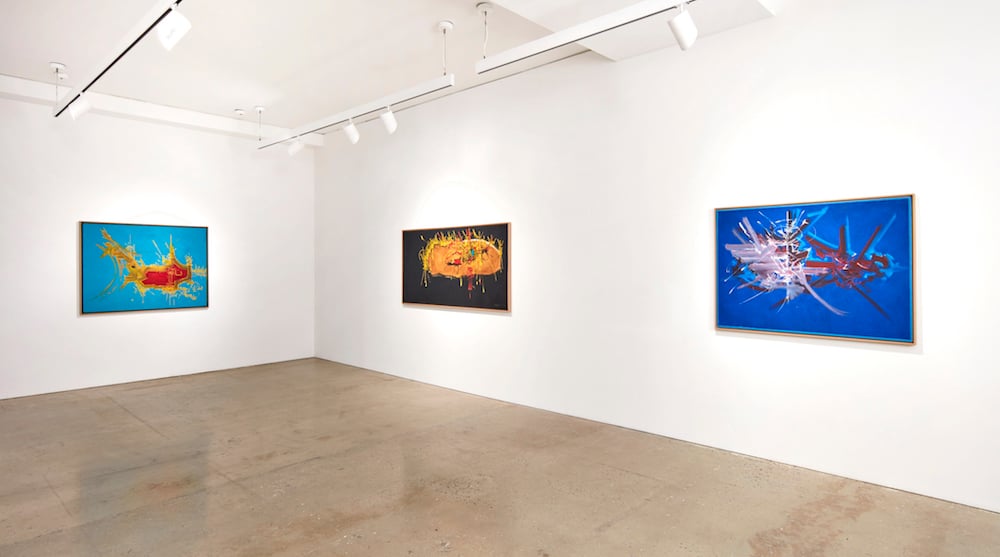
Installation view of Georges Mathieu at Nahmad Contemporary. Image courtesy of Nahmad Contemporary
“One of the reasons why Mathieu fell out of favor is not because of the quality of his work, but perhaps because of the way he made his paintings,” said Nahmad Contemporary owner Joe Nahmad. “His peers, the American Ab-Ex artists, as well as the critics at the time, did not respond well to the theatrical nature of how Mathieu would create a painting in front of a live audience. Today, I believe that is one of his most important art historical contributions, as he is the first to paint live as a performance. This had a profound influence on Yves Klein, for example.”
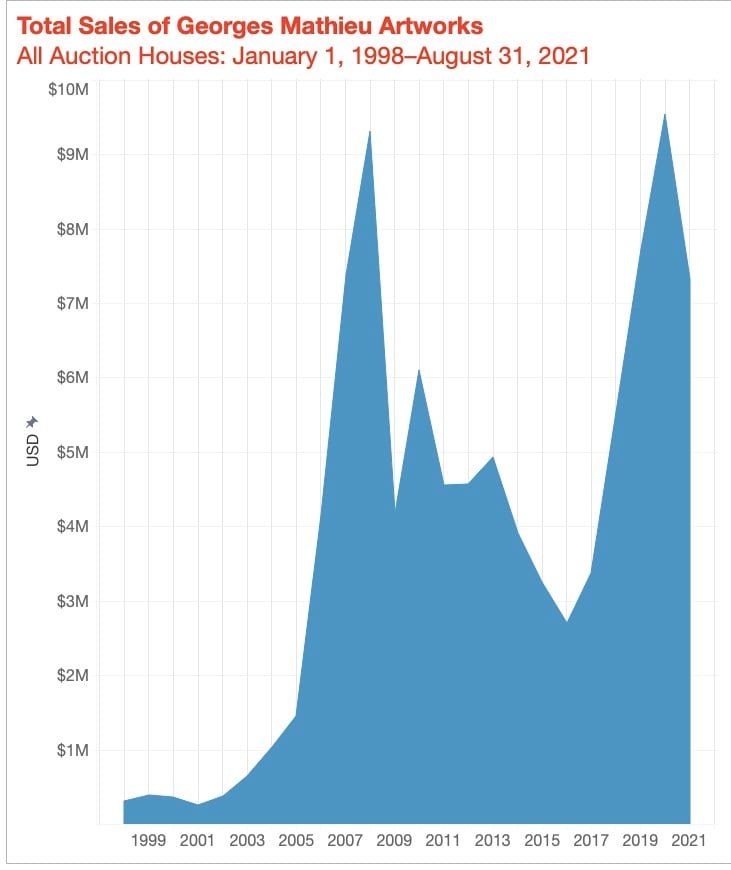
Source: Artnet Analytics.
Aside from the backlash over Mathieu’s overexposure, shifting tastes in the 1980s and ’90s compounded the effects on his market. Mathieu’s royalist tendencies made him something of an outcast during the tenure of socialist president Francois Mitterrand in the 1980s. “The fashion,” Fau said, “was looking to Basquiat, Haring, and other street artists. A new generation was taking over.”
But about 15 years ago, Fau said that he and his colleagues “began to chase Mathieu’s work because we were absolutely convinced of the the quality of the work and that it was undervalued,” he said, especially compared to other postwar European artists. “He was a good buy to advise to collectors.”
Mathieu’s painting “really speaks for itself,” said Etienne Sallon, a Christie’s specialist and head of the evening sale in Paris. “It’s very gestural, colorful, and powerful. You can enjoy them directly,” without elaborate explanation.
At that time, the auction highs ranged around $250,000. Momentum began to build and after several years, a steadily growing market and abundance of supply then began prompting Fau and his colleagues to send Mathieu works to auction in Hong Kong. The response from Asian collectors proved extraordinary.
“It was originally a European market,” said Sallon. “That really changed in the last two years. The new players are based in Asia and the market really changed because of that.” Mathieu’s style also drew comparisons to another acclaimed postwar abstract painter, the late Chinese French star Zao Wou-ki, Sallon said.
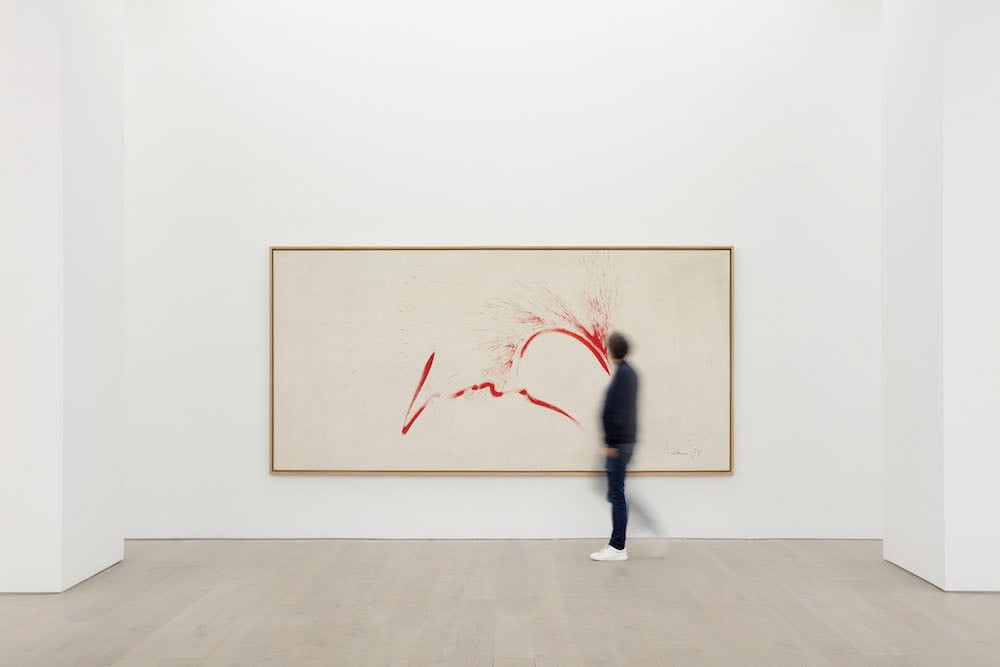
Installation view of Georges Mathieu at Perrotin New York, 2021. Photo: Guillaume Ziccarelli. © Georges Mathieu / ADAGP, Paris & ARS, New York, 2021. Courtesy of the artist and Perrotin.
“Up until recently, and over the past 40 years or so, the Mathieu market was essentially made up of European dealers and collectors, mainly in France and Italy,” said Nahmad.
The demand from Asian buyers has further closed the price gap that long existed between earlier and later works. For instance, Mathieu’s current auction record, $2.2 million, was set at Christie’s Hong Kong in December 2020, for a 1978 work titled Souvenir de la maison d’Autriche (Remembering the House of Austria).
The second-highest price, $1.8 million, was achieved for a work made 20 years earlier, L’Abduction d’Henri IV par l’archevêque Anno de Cologne (1958), which sold at Sotheby’s Paris, 13 years ago.
In recent years, both Fau and Sallon say the representation and support by Perrotin and Nahmad have solidified the global representation—including showing the work at numerous art fairs—and strengthened confidence in the artist’s secondary market.
To date, 20 works have sold at auction for more than $500,000 each, and three of those works sold for more than $1 million each.
“It has been gratifying to witness the reevaluation of Mathieu’s practice, especially as a French dealer,” gallery owner Emmanuel Perrotin told Artnet News. “We are finally, after many years, beginning to see a shift in recognition, especially with crucial institutional support.”
In the first few months of the new year, Mathieu’s work fetched strong auction results three times in a row, noted Perrotin (the prices achieved ranged from $832,000 to just over $1 million). This year, 92 percent of Mathieu’s auction lots sold, which is an exponential increase from 2000, which saw only 52 percent of lots hammered.
Mathieu is also one of the most frequently searched artist names in the Artnet Price Database. According to Artnet Analytics, there were 58 searches in August 2020, compared with 289 searches in July 2021, a nearly five-fold increase. (Readers can buy the full standard artist report with Artnet Analytics here.)
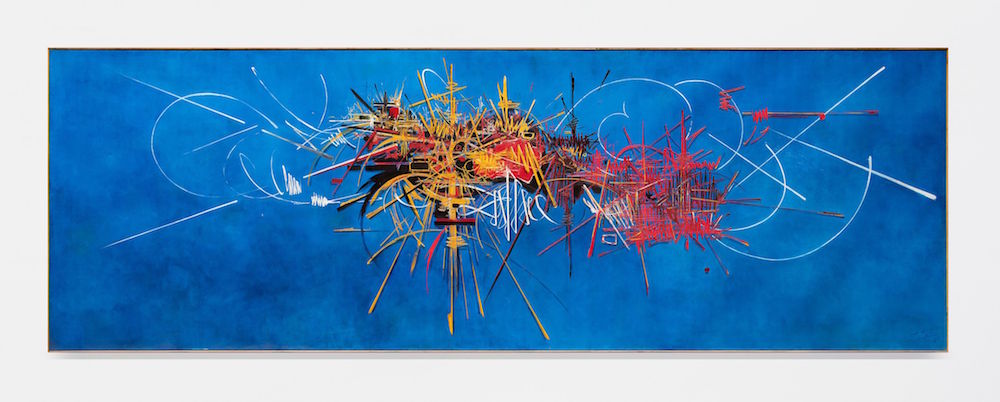
Georges Mathieu, Paris, Capital of the Arts (1965). Photographer: Claire Dorn © Georges Mathieu / ADAGP, Paris & ARS, New York, 2021. Courtesy of the artist and Perrotin.
When asked how Mathieu’s primary market prices stack up to his auction highs, Perrotin said: “By nature, auctions are an exaggerated and unpredictable version of the private market. Perrotin’s primary goal is to place Mathieu’s masterpieces with meaningful collections, ensure a consistent market, and organize impactful exhibitions so a global audience can re-engage with Mathieu’s legacy.“
Most of the works in the Perrotin show are priced at $100,000 to $500,000, with four at over $1 million each. The centerpiece of the show, the large-scale painting The Victory of Denain, has an asking price of $6 million.
“They say that history is very much written by the victors, and when I was young, the American Abstract Expressionists had almost entirely eclipsed their European counterparts, at least in terms of visibility,” said Perrotin. “I remember reading an Artforum review by Barry Schwabsky from the late ’90s where he said ‘mid-century French art is still largely dismissed as a provincial taste.’ It was important for me to be champion for its inherent value and I have spent considerable time working with Pierre Soulages and the estate of Hans Hartung. It is a pleasure to begin to see a shift.”